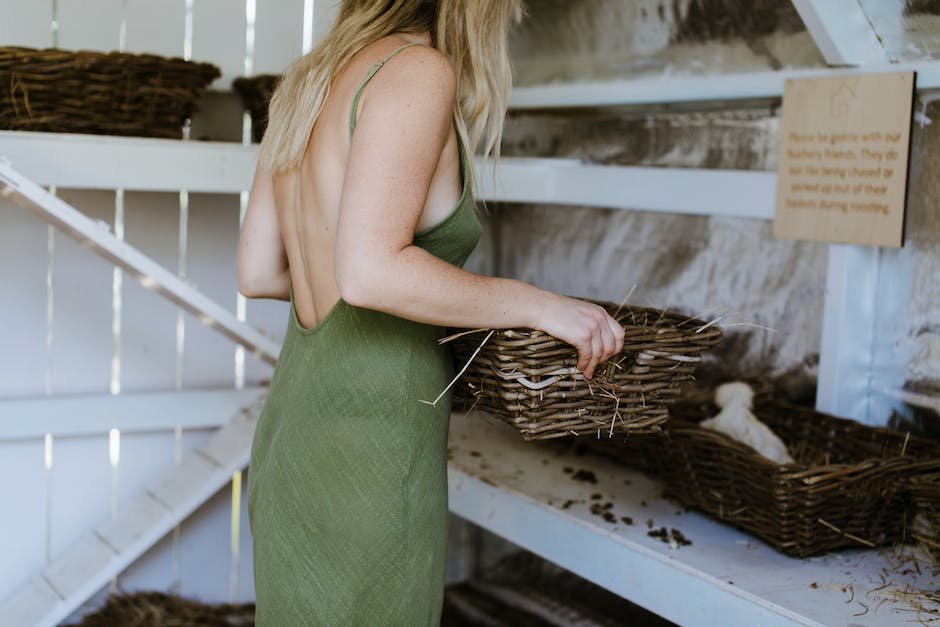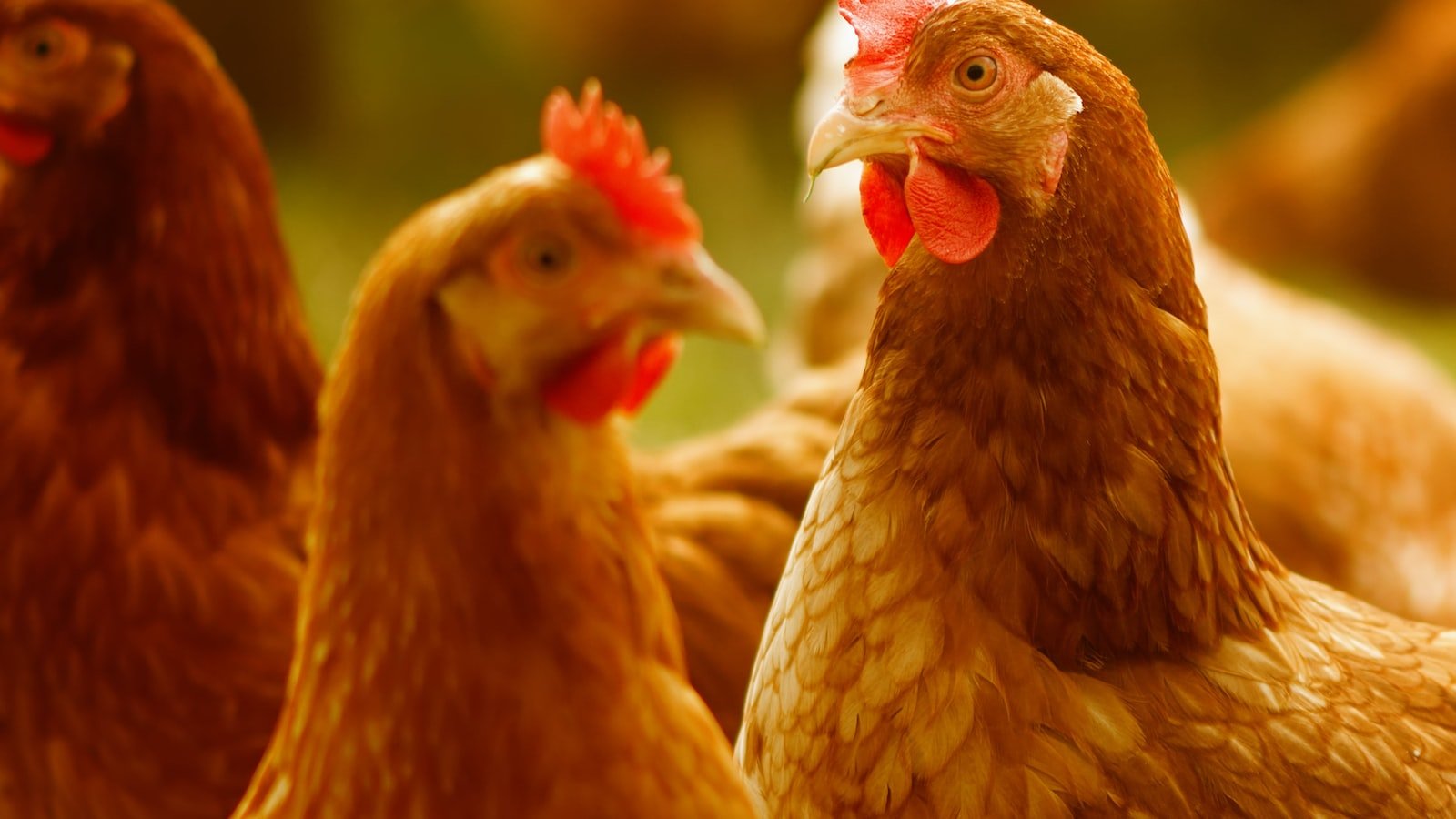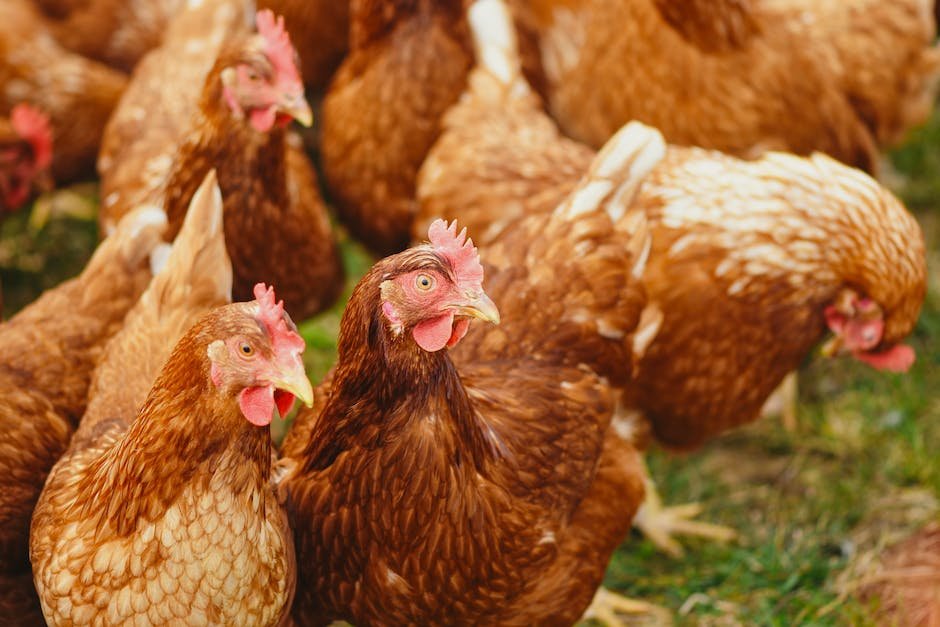If you’re a proud owner of a chicken coop, you know just how important it is to keep your feathery friends safe and sound from potential predators. As the sun dips below the horizon, darkness brings forth a whole host of creatures sniffing around for a midnight snack. But fear not, intrepid poultry protector! We bring you a comprehensive guide on how to fortify your chicken coop, ensuring that your feathered companions remain safe within their cozy abode. From robust locks to ingenious tips, join us on a quest to outsmart the sneakiest of predators as we uncover the secrets to securing your chicken coop.
Table of Contents
- Understanding the Importance of Securing Your Chicken Coop
- Types of Locks to Safeguard Your Chicken Coop
- Essential Tips for Enhancing the Security of Your Chicken Coop
- Evaluating Potential Vulnerabilities and Taking Precautions
- Additional Measures to Protect Your Feathered Friends
- Q&A
- Insights and Conclusions

Understanding the Importance of Securing Your Chicken Coop
Ensuring the security of your chicken coop is paramount when it comes to raising a healthy and productive flock. Not only does a well-secured coop protect your feathery companions from potential predators, but it also helps maintain a stress-free environment for them to thrive in.
One of the main reasons why securing your chicken coop is crucial is to safeguard your chickens from predators. Predatory animals such as foxes, raccoons, and even neighborhood dogs pose a constant threat to the safety of your flock. By implementing strong and sturdy fencing around the coop, you can effectively deter these unwelcome visitors and protect your chickens from harm.
Moreover, a secure coop also prevents chickens from escaping and helps to establish order within the flock. A well-maintained fencing system, complemented by secure doors and windows, ensures that your chickens remain in a designated area, reducing the risk of them wandering off or getting lost. This confinement fosters a sense of security for the chickens, preventing unnecessary stress and promoting healthy growth.
Remember, a secure chicken coop is not only crucial for the protection of your cherished poultry but also for your peace of mind as a caring chicken owner. So invest in robust fencing, reliable locks, and other security measures to safeguard your feathered friends.

Types of Locks to Safeguard Your Chicken Coop
When it comes to protecting your beloved chickens, investing in the right locks for your coop is essential. With various types of locks available, you can ensure that your feathered friends are safe from predators and keep them secure at all times.
1. Padlocks: One of the most popular choices for securing chicken coops, padlocks offer a sturdy and reliable option. They come in various sizes and designs, allowing you to choose the one that best suits your coop’s needs. Make sure to opt for a weather-resistant padlock to withstand the elements.
2. Deadbolts: Ideal for reinforced coop doors, deadbolts provide an extra layer of security. These locks are difficult to force open, making them an excellent deterrent against intruders. Consider pairing a deadbolt with a padlock for added protection.
3. Keyless Entry Systems: For the tech-savvy chicken owners, keyless entry systems offer convenience and enhanced security. These systems often utilize codes or fingerprint recognition technology to grant access to the coop. With no keys to lose or duplicate, you can ensure only authorized individuals are allowed into the coop.
Remember, selecting the appropriate lock for your chicken coop depends on your specific requirements, budget, and the level of security you desire. Regardless of the type you choose, regular maintenance and inspections are vital to ensuring their effectiveness and keeping your feathered friends safe.

Essential Tips for Enhancing the Security of Your Chicken Coop
Ensuring the safety and security of your feathered friends in the chicken coop is of utmost importance. Here are some essential tips to help you enhance the security of your coop and protect your chickens from potential threats:
- Fortify the perimeter: Start by securing the perimeter of your chicken coop. Use sturdy wire mesh or hardware cloth to create a fence that is buried at least 12 inches into the ground to deter burrowing predators.
- Lock it up, predators out: Install a strong lock on the chicken coop door to keep predators such as raccoons, foxes, and weasels from gaining access to your chickens. Remember to reinforce any weak points or gaps in the coop to prevent unwelcome intruders.
- Provide proper lighting: Illuminate the surroundings of your chicken coop with motion-activated lights. Not only will this deter nocturnal predators, but it will also help you monitor any unusual activities around the coop at night.
- Create an obstacle course: Discourage predators by creating obstacles around the coop area. Place barriers such as rocks, gravel, or prickly bushes near vulnerable spots to make it harder for predators to approach the coop undetected.
- Regularly inspect and maintain: Periodically inspect the coop for any signs of wear or damage. Repair or replace any broken wires, boards, or locks promptly to ensure the continued security of your chicken coop.
By following these essential tips, you can significantly enhance the security of your chicken coop and keep your feathered friends safe from potential harm. Remember, a well-protected coop leads to happier and healthier chickens!

Evaluating Potential Vulnerabilities and Taking Precautions
is a crucial step in ensuring the security and resilience of any system. By identifying weaknesses and implementing preventive measures, organizations can effectively mitigate risks and protect their assets from potential threats.
One way to evaluate potential vulnerabilities is through thorough risk assessments. This involves identifying and analyzing potential threats, assessing their likelihood and potential impact, and prioritizing them based on their level of risk. Through this process, organizations can gain a comprehensive understanding of their vulnerabilities and make informed decisions on how to address them.
Once vulnerabilities are identified, it is important to take appropriate precautions to minimize the risks. This can involve implementing strong access controls, regularly updating software and systems, and educating employees on best practices for security. By adopting a proactive approach and consistently monitoring for potential threats, organizations can significantly reduce their vulnerability to attacks.
Ensuring the security of a system is an ongoing process, as new vulnerabilities may emerge over time. By staying vigilant and continually evaluating potential risks, organizations can continually strengthen their defenses and protect against both known and unknown threats.
Additional Measures to Protect Your Feathered Friends
When it comes to keeping our beloved feathered friends safe, there are a few additional measures that we can take to ensure their well-being. These measures not only provide extra protection but also contribute to creating a nurturing environment for our avian companions.
Tips for Extra Safety:
- Install predator deterrents: Building a predator-proof enclosure or adding deterrents such as motion-activated sprinklers can help keep unwanted visitors away from your feathered friends. This extra layer of protection ensures that your birds remain safe from predators like foxes, raccoons, and cats.
- Secure feeding areas: Birds can attract unwanted animals searching for an easy meal. Consider installing bird feeders and water stations in safe, elevated areas or using specialized feeders that are designed to deter larger animals.
- Minimize exposure to chemicals: Chemicals found in pesticides, fertilizers, and even some cleaning products can be harmful to birds. Opt for bird-safe alternatives and ensure that your feathered friends have minimal contact with potentially toxic substances.
- Prevent access to hazardous areas: It’s essential to bird-proof your home and surrounding areas. Cover or secure any open chimneys, vents, or pipes to prevent accidental entry that could lead to injury.
By implementing these additional protective measures, we can ensure that our feathered friends are safe, secure, and able to flourish in their environment. Remember, the well-being of our avian companions should always be a top priority.
Q&A
How important is it to secure your chicken coop?
Securing your chicken coop is crucial in keeping your feathered friends safe from predators and ensuring their overall well-being. By implementing proper locks and tips, you can protect your chickens from harm and provide them with a secure environment to live in.
What are some effective locks for a chicken coop?
There are several reliable locks available for chicken coops, including padlocks, barrel bolts, and key-operated locks. It’s recommended to choose sturdy locks that cannot be easily tampered with or manipulated by predators.
Can I use a combination lock on my chicken coop?
While combination locks may seem convenient, they are not the most suitable option for securing a chicken coop. The dexterity required to operate them can be challenging for individuals who are not accustomed to using combination locks. Therefore, it’s best to opt for locks that offer ease of access and reliability.
What are some additional tips to secure a chicken coop?
Aside from using sturdy locks, there are other helpful tips to enhance the security of your chicken coop. Install wire mesh fencing with small spacing to prevent predators from entering, reinforce doors and windows, and regularly inspect the coop for any potential weak points that may need reinforcement.
How can I deter predators from approaching the chicken coop?
Implementing deterrents around your chicken coop can help discourage predators from approaching. Some effective measures include motion-activated lights, loud noises such as wind chimes or alarms, and utilizing natural predators like dogs or geese to patrol the area around the coop.
What should I do if I notice potential entry points or damage to the coop?
If you discover any potential entry points or damage to your chicken coop, it’s essential to promptly address the issue. Repair any damaged areas, reinforce weak spots, and ensure that locks are in proper working condition. Regular maintenance will help keep your chickens safe and secure.
Are there any alternative methods to secure a chicken coop?
In addition to locks and physical deterrents, some chicken owners choose to implement electronic security systems, such as cameras or motion sensors, to monitor their chicken coops. These can provide an extra layer of protection and alert you to any potential threats in real-time.
What should I consider when choosing locks for my chicken coop?
When selecting locks for your chicken coop, consider their durability, ease of use, and resistance to tampering. Additionally, opt for locks that are weather-resistant to ensure they remain functional and reliable in various conditions. Investing in high-quality locks will provide peace of mind in securing your feathered friends.
Insights and Conclusions
As the sun sets on this comprehensive guide to fortifying your feathered friends’ fortress, we hope you feel empowered and cluckified (yes, we just made that up) with your newfound knowledge of chicken coop security. Remember, protecting your precious poultry pals isn’t just about locks and latches; it’s about creating an impenetrable safe haven that grants them the freedom to scratch, cluck, and roam without a care in the world.
By now, you’ve delved into the realm of sturdy locks, intricate mechanisms, and innovative techniques tailored specifically to confound cunning critters. Armed with this knowledge, you can sleep soundly knowing that your cluck-worthy coop is safeguarded against the creeping darkness that prowls when the moon hangs high.
But, dear reader, the realm of chicken coop security extends far beyond pragmatism and practicality. It is a testament to your love for these fine feathered friends, transcending mere gatekeepers and becoming an aesthetic expression of your dedication. For you, the coop is a living testament to the unique bond forged between humans and their feathery companions.
So, whether you opt for a traditional padlock or an ingenious contraption that rivals even the most complex bank vaults, make sure the love is woven into each strand of the sturdy wire mesh. Remember, it’s not only the assurance of safety but a sanctuary of love that will make your chickens feel invincible.
Now, dear readers, as the moonlight whispers its secrets across the dew-kissed meadows, take a moment to admire the fruits of your labor. Let the satisfaction wash over you as you gaze upon the coop, beaming with pride at the fortress you’ve meticulously crafted. Your majestic coop, an undeniable testament to the lengths you’ve gone to protect your feathered troop.
In this final chapter, it’s our earnest hope that you’ve found inspiration amidst the practicality. That, driven by love, you’ve built not only a formidable barrier but a fortress of solace. Because, let’s face it, your chickens deserve nothing less, and their safety rests gently in your hands.
So, farewell, chicken coop enthusiasts! May your feathered friends roam freely under the watchful gaze of your beautifully fortified coop. May they delight in glorious clucking symphonies, blissfully unaware of the potential dangers lurking just beyond their haven’s walls. And may your devotion continue to inspire others to secure their own chicken castles, because after all, what’s more noble than being a guardian of poultry paradise?
As an affiliate, my content may feature links to products I personally use and recommend. By taking action, like subscribing or making a purchase, you’ll be supporting my work and fueling my taco cravings at the same time. Win-win, right?
Want to read more? Check out our Affiliate Disclosure page.
